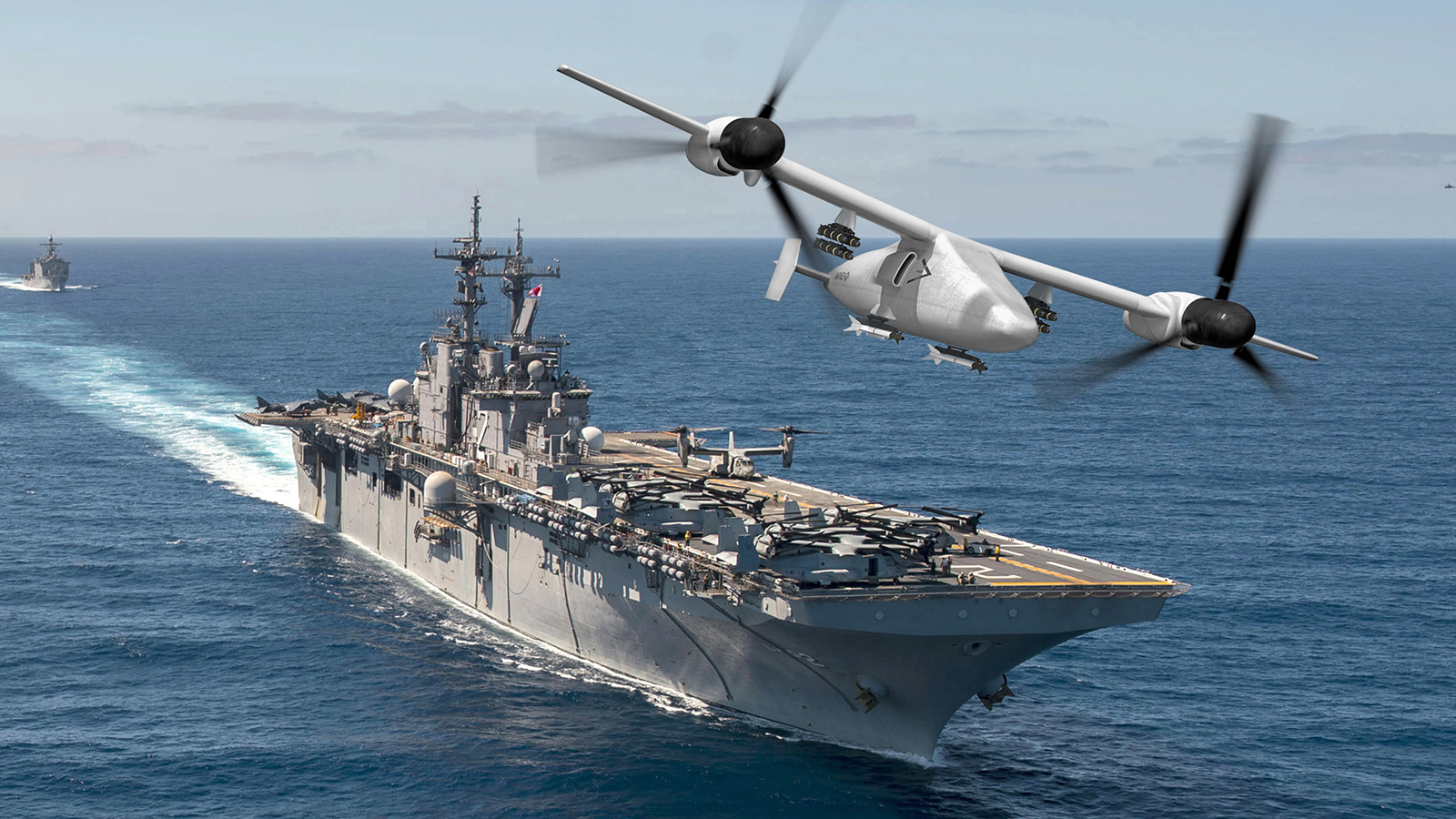Stay Up to Date
Submit your email address to receive the latest industry and Aerospace America news.
Aficionados of U.S. military aviation might have noticed that the very real-looking rotorcraft pictured over an amphibious assault ship in the “2019 Marine Corps Aviation Plan” does not yet exist. It’s a drone design called the V-247 that Bell of Texas would like to sell to the Corps. In an unusual step, the Corps plans to pay on its own to develop the V-247 or a competing design without help from other service branches.
A Marine spokesman cautions that publishing Bell’s illustration of the V-247 in the aviation plan last month does not indicate that the Corps has chosen a design for its MUX fleet, short for MAGTF (Marine Air-Ground Task Force) Unmanned Expeditionary aircraft. Bell presented the V-247 concept to the Marine Corps in response to a 2018 request for information about drones that would take off from and land on ships while carrying thousands of kilograms of cameras, weapons or cargo slung beneath them. The Corps has asked for $21 million in its fiscal 2020 budget request to study technical concepts that could lead to developing and fielding the aircraft by fiscal 2026.
The Marine Corps, which is organized under the Department of the Navy, typically does not have the money or clout to acquire a fleet of aircraft on its own. As the smallest service branch, it frequently joins with the Navy or — in the case of “light attack” turboprop planes — the Air Force in purchasing aircraft. In this case, the Corps plans to develop and buy the ship-based drones on its own, the spokesman says.
Bell started designing the V-247 in 2015 as an unmanned, smaller version of its conventionally piloted V-280 Valor tiltrotor demonstrator. The V-247, like its V-280 cousin, would take off vertically and then tilt its rotors and gearboxes to transition to horizontal flight. By contrast, today’s V-22 Ospreys tilt their entire engines. For fuel economy, the V-247 would have one engine mounted internally that turns the rotors through an interconnect shaft. The V-280 has two external engines on the wing ends. The “247” refers to its long-endurance capabilities, as in 24 hours a day and seven days a week, whereas the V-280 is named for its cruise speed of 280 knots. Bell says the V-247 could stay aloft for at least eight hours after flying 650 kilometers from a ship and that it could refuel in the air to extend its flight time. Bell unveiled a subscale model in 2016 and a full-scale model in 2018 after refining the design through wind-tunnel testing and analyses of how the hydraulics, the electrical and cooling systems, and other components will affect the aircraft.
“What you see today is an aircraft that actually looks real. It’s not a cartoon aircraft anymore. You can actually see that this aircraft is being designed as an actual, producible aircraft,” says Todd Worden, manager of sales and strategy for unmanned aircraft at Bell.
The V-247 is not related to the Future Vertical Lift program, although Bell envisions the V-247 accompanying V-280s on missions and as a candidate to fit yet-to-be-requested drone needs of the other service branches.
About Keith Button
Keith has written for C4ISR Journal and Hedge Fund Alert, where he broke news of the 2007 Bear Stearns hedge fund blowup that kicked off the global credit crisis. He is based in New York.
Related Posts
Stay Up to Date
Submit your email address to receive the latest industry and Aerospace America news.




